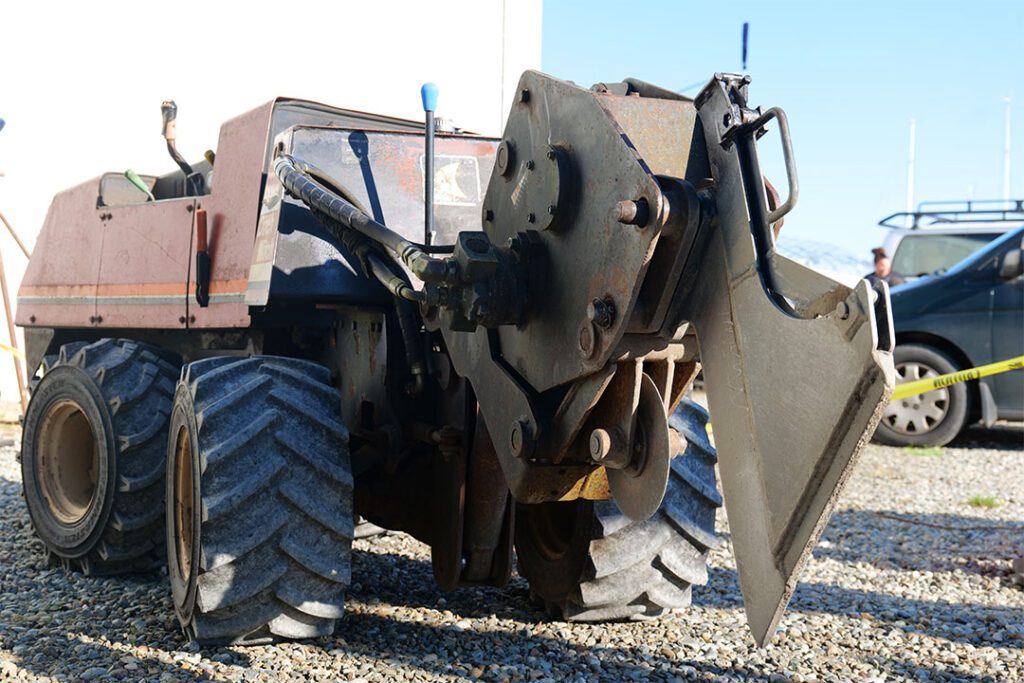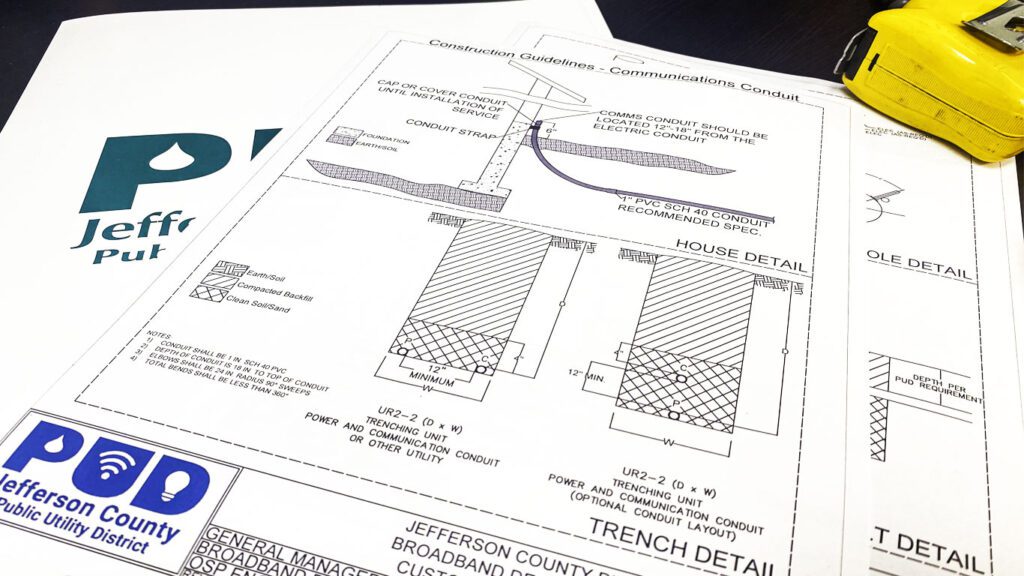Fiber in the Field: FAQ’s
Broadband rollout is underway for residents in the Olympic Fiber Corridor, and customers have asked some great questions about fiber to the home. Let’s look at a few here.
The PUD broadband team is in my neighborhood. What are they up to?
We are conducting fiber drop surveys to plot fiber to the home. Plotting involves placing points and generating pathways using specialized software accessible by broadband staff and contractors.
Surveys allow for a real world look at fiber pathways to the home. Staff can add images and notes to each site, resulting in maps that provide contractors with much of the information they need for construction. Surveys also help guide locate services for other utilities to identify areas where existing water, power, or other services are present.
If you have any questions about the fiber to the home process, please ask our broadband staff!
How does the fiber get to my home?
PUD contractors can run fiber optic cable overhead or underground.

Overhead installation often follows existing lines from pole-to-home. The fiber is attached to the home and runs into a small box on the exterior. This box is called an NID (network interface device).
Undergrounding of fiber can be done several ways, including: vibratory fiber plow, trenching, or hand digging.
- A vibratory fiber plow is often a track or wheeled machine with a hook attachment at the rear that direct-buries a fiber line at the required depth. Vibratory plows allow contractors to place lines accurately through hardpack driveways, lawns, and around physical objects. The resulting plow mark is often thin but is dependent upon terrain. Please note that use of a plow can impact residential vegetation due to its size and work area.
- Trenching involves opening a swath of ground to insert the fiber line. Trenching often involves the use of digging implement similar in design to a chainsaw blade, but far larger (and slower moving). Trenching is a straight-line operation and does produce a space several inches wide. Trenching requires the contractor to backfill the area and does require vegetation regrowth.
- Hand-digging is needed to carefully navigate the ends of undergrounding to the home and can impact vegetation.
Fiber contractors will determine the best methods for getting fiber to the home, and in each case the contractor will place the NID on the home. A broadband team member will then contact the homeowner to schedule a time for installation of the network equipment.
Can I place communications conduit myself?
Yes, but please reach out! Customers can place their own conduit for fiber to the home, however we ask they reach out to our broadband staff at: broadband@jeffpud.org to determine placement and specifications. PUD communications conduit standards are available here.
Please reach out to the free 8-1-1 service prior to any trenching or conduit construction. 8-1-1 is quick & easy and ensures all potential utilities in the area are alerted so they may conduct a free utility locate service (visible by spray markings on the ground if utilities are present). Learn more about 811 here.
Please note that fiber construction to the home is no-charge for services registered prior to each grant threshold being reached.
I have a long driveway…are there any additional costs?
Fiber construction in grant funded areas is limited to ~1,000 feet. Driveways beyond 1,100 feet may require customers to pay a portion of the construction charges. Buildout within “Adjacent Areas” is limited to ~500 feet, with driveways beyond 550 feet requiring customers to pay a portion of the construction charges.

My home is in a yellow fiber zone on the map. What does this mean?
Your service is within our Adjacent Areas buildout. Homes or businesses immediately adjacent to project areas within the yellow boundaries are able to have fiber installed by paying a portion of the construction cost. A construction fee of $750 does apply to services in these areas. The construction fee can be a one-time payment, or evenly distributed in billing over a 3-year period. Customers in Adjacent Areas are limited to ~500 feet, with driveways beyond 550 feet requiring customers to pay a portion of the construction charges.
Please note that grant funded areas are a priority, as they have specific funding deadlines. Construction and connections in adjacent area will take place in conjunction with construction and connections in nearby grant areas or as soon as possible.
Check to see if your home is within a grant, loan, or adjacent area today on fiber.jeffpud.org. Registering takes just a few minutes!